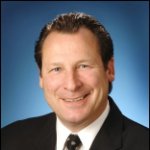Inventors:
- Pleasanton CA, US
Amy L. HIDDESSEN - Pleasanton CA, US
Nathan P. HOVERTER - Pleasanton CA, US
Klint A. ROSE - Oakland CA, US
Juan G. SANTIAGO - Stanford CA, US
Matthew S. MUNSON - Evanston IL, US
Janine MOK - Palo Alto CA, US
Sean ARIN - Oakland CA, US
Yatian QU - Sunnyvale CA, US
Andrew LEE - Hayward CA, US
International Classification:
C12N 15/10
G01N 27/447
B01L 3/00
Abstract:
The present disclosure relates to fluidic systems and devices for processing, extracting, or purifying one or more analytes. These systems and devices can be used for processing samples and extracting nucleic acids, for example by isotachophoresis. In particular, the systems and related methods can allow for extraction of nucleic acids, including non-crosslinked nucleic acids, from samples such as tissue or cells. The systems and devices can also be used for multiplex parallel sample processing.





